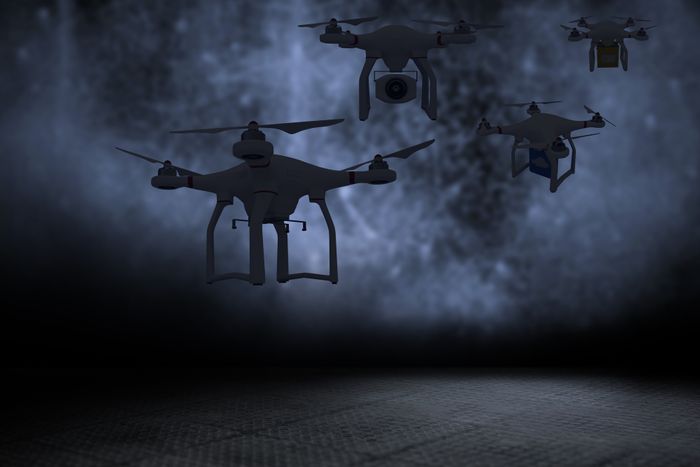
- May 9, 2024
- |security guard company
- | 0
Surveillance Technology –
The evolution of surveillance technology has revolutionized the way security professionals conduct surveillance operations, gather intelligence, and monitor activities. From traditional tools like binoculars to cutting-edge innovations like drones, advancements in surveillance technology have enhanced the capabilities and effectiveness of security and investigation operations. In this article, we explore the evolution of surveillance technology, tracing its progression from simple optical devices to sophisticated aerial platforms, and examining the impact of these advancements on security practices.
Early Surveillance Tools: Binoculars and Telescopes
Before the advent of modern surveillance technology, security professionals relied on simple optical devices such as binoculars and telescopes to observe and monitor activities from a distance. Binoculars provided magnification and enhanced vision, allowing security personnel to maintain surveillance over large areas or observe subjects discreetly. Telescopes offered even greater magnification capabilities, enabling long-range observation and detailed reconnaissance of target locations.
While binoculars and telescopes were effective for static surveillance and observation, they had limitations in terms of range, field of view, and mobility. Security personnel were often restricted to fixed observation points and required line-of-sight visibility to maintain surveillance effectively.
Advancements in Video Surveillance: CCTV Systems
The development of closed-circuit television (CCTV) systems marked a significant advancement in surveillance technology, allowing for continuous, real-time monitoring of target areas or facilities. CCTV systems consist of cameras, video recording devices, and monitoring stations, enabling security personnel to capture, record, and review video footage for surveillance purposes.
CCTV systems offer several advantages over traditional optical devices, including:
1. Continuous Monitoring: CCTV systems provide continuous surveillance coverage, allowing security personnel to monitor target areas or facilities around the clock.
2. Remote Access: Many modern CCTV systems offer remote access capabilities, allowing security personnel to view live video feeds and access recorded footage from anywhere with an internet connection.
3. Enhanced Recording: CCTV systems can record high-quality video footage with advanced features such as motion detection, night vision, and digital zoom, enhancing the clarity and detail of captured images.
4. Integration with Analytics: Some CCTV systems incorporate advanced analytics capabilities, such as facial recognition, license plate recognition, and object detection, to automate surveillance tasks and enhance situational awareness.
Introduction of Unmanned Aerial Vehicles (UAVs): Drones
The introduction of unmanned aerial vehicles (UAVs), commonly known as drones, has revolutionized surveillance operations by providing aerial reconnaissance capabilities without the need for manned aircraft. Drones are equipped with cameras, sensors, and other surveillance equipment, allowing security personnel to capture high-resolution images and video footage from aerial perspectives.
Drones offer several advantages for surveillance operations, including:
1. Versatility: Drones can access remote or inaccessible areas that may be challenging to reach by ground, providing aerial surveillance coverage over large areas or rugged terrain.
2. Stealth: Drones can operate discreetly and quietly, minimizing the risk of detection by subjects or adversaries during surveillance operations.
3. Flexibility: Drones can be deployed quickly and easily, making them ideal for rapid response situations or dynamic surveillance operations that require agility and flexibility.
4. Cost-Effectiveness: Drones offer a cost-effective alternative to manned aircraft for aerial surveillance, reducing operational costs and resource requirements associated with traditional aerial reconnaissance methods.
Integration of Artificial Intelligence (AI) and Automation
The integration of artificial intelligence (AI) and automation technologies is shaping the future of surveillance, enabling security professionals to automate surveillance tasks, analyze large volumes of data, and extract actionable insights from video footage. AI-powered analytics platforms can detect and track objects of interest, identify abnormal behaviors or patterns, and alert security personnel to potential security threats in real time.
Some key applications of AI and automation in surveillance technology include:
1. Behavioral Analysis: AI algorithms can analyze video footage to detect and analyze human behavior patterns, such as crowd movements, suspicious activities, or abnormal behavior.
2. Object Recognition: AI-powered object recognition technologies can identify and classify objects in video footage, such as vehicles, weapons, or individuals, based on predefined criteria or characteristics.
3. Predictive Analytics: AI-driven predictive analytics platforms can forecast future security threats or incidents based on historical data, trends, and patterns, enabling security professionals to proactively mitigate risks and prevent security breaches.
4. Autonomous Surveillance: Advances in automation technology enable the development of autonomous surveillance systems that can operate without human intervention, performing tasks such as patrolling, monitoring, and reporting security incidents automatically.
The evolution of surveillance technology has transformed the way security professionals conduct surveillance operations, gather intelligence, and monitor activities. From the early use of binoculars and telescopes to the introduction of CCTV systems and unmanned aerial vehicles (drones), advancements in surveillance technology have expanded the capabilities and effectiveness of security and investigation operations.
The integration of artificial intelligence (AI) and automation technologies further enhances the capabilities of surveillance systems, enabling security professionals to automate surveillance tasks, analyze large volumes of data, and extract actionable insights from video footage. By embracing the latest innovations in surveillance technology, security companies like XPressGuards can enhance their capabilities, improve situational awareness, and better protect their clients’ assets and interests. Contact us now to learn more.


